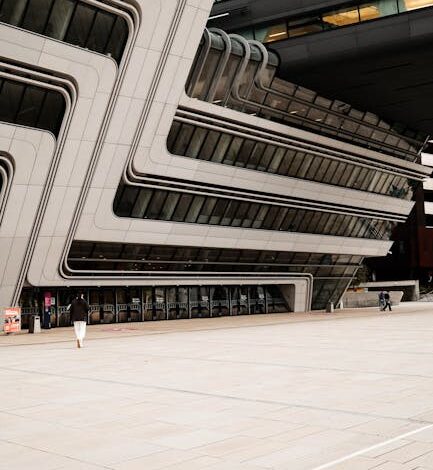Taking These 50 Objects Out of Orbit Would Cut Danger From Space Junk in Half

Taking These 50 Objects Out of Orbit Would Cut Danger From Space Junk in Half
Estimated Reading Time: 7 minutes
- Removing just 50 high-risk pieces of space junk could halve the collision danger in Low Earth Orbit (LEO).
- Space junk, traveling at immense speeds, poses a significant threat to active satellites and risks a catastrophic chain reaction known as the Kessler Syndrome.
- The “top 50” strategy targets large, strategically located debris that, if removed, would prevent future fragmentations and major collisions.
- Addressing this challenge requires a multi-faceted approach: developing and deploying Active Debris Removal (ADR) technologies, strengthening international regulations, and improving Space Situational Awareness (SSA) and tracking.
- Preserving LEO is crucial for maintaining essential space-based services and ensuring humanity’s continued access to space for future innovation.
- The Invisible Threat: Why Space Junk Matters
- The “Top 50” Strategy: A Focused Solution
- The Path Forward: Technology, Policy, and Action
- Conclusion
- Join the Conversation!
Our planet’s immediate cosmic neighborhood, Low Earth Orbit (LEO), is becoming increasingly crowded. Far from an empty vacuum, it’s a bustling highway for thousands of active satellites that provide critical services from communication and navigation to weather forecasting and Earth observation. Yet, this vital orbital space is also littered with a growing menace: space junk.
The sheer volume of defunct objects poses a significant and escalating threat to our modern way of life, which relies heavily on space-based infrastructure. Imagine navigating a busy street where half the cars are broken down and abandoned, yet still moving at lethal speeds. That’s essentially the challenge we face in LEO.
The good news? A growing consensus among space experts suggests that the solution might not be as overwhelmingly vast as the problem itself. Instead of tackling every single piece of debris, a strategic, targeted approach could yield dramatic results. Research indicates that removing a relatively small number of key objects—as few as 50—could effectively halve the collision risk in Earth’s busiest orbital lanes.
Old rocket parts and decommissioned satellites are whizzing around in low Earth orbit, where they risk colliding with the ever-growing constellations of modern satellites being launched. This isn’t just a hypothetical concern; it’s a present and future danger that demands immediate attention.
The Invisible Threat: Why Space Junk Matters
Space junk, or orbital debris, encompasses everything from spent rocket stages and defunct satellites to tiny fragments from past collisions and even flecks of paint. While often invisible to the naked eye, these objects pose an extraordinary danger due to their incredible velocities. In LEO, objects travel at speeds up to 17,500 miles per hour (28,000 km/h) – fast enough to circle the Earth in about 90 minutes. At these speeds, even a small paint chip can inflict significant damage on a satellite, and larger objects can cause catastrophic destruction.
The primary concern is the potential for a cascading chain reaction known as the Kessler Syndrome. This grim scenario posits that if the density of orbital debris in LEO reaches a critical threshold, collisions between objects could generate even more debris, leading to further collisions. This exponential increase in junk could render certain orbital altitudes unusable for generations, effectively locking humanity out of its own planet’s orbit and disrupting countless services we take for granted.
Active satellites, including critical infrastructure like the International Space Station, must regularly perform evasive maneuvers to avoid predicted collisions with debris. Each maneuver costs fuel, shortens operational life, and carries inherent risks. Beyond direct damage, the sheer volume of untrackable debris makes safe and efficient space operations more challenging and costly. It hinders everything from launching new missions to monitoring climate change and providing global connectivity.
The “Top 50” Strategy: A Focused Solution
The concept of targeting a “top 50” or similar small number of objects isn’t about ignoring the vast majority of space junk. Instead, it’s a highly strategic approach based on the understanding that not all debris contributes equally to the collision risk. Some objects, due to their size, mass, orbital characteristics (e.g., highly eccentric or crossing multiple busy lanes), and position, are far more dangerous than others.
These “high-risk” objects are essentially the orbital equivalent of a domino that, if tipped, could knock down many others. They are large, often decommissioned satellites or rocket bodies, situated in orbits that intersect with numerous active spacecraft or other significant debris fields. Removing one of these objects would not only eliminate a single collision threat but would also prevent it from potentially fragmenting into thousands of new, untrackable pieces in a future collision.
For example, the 2009 collision between the operational Iridium 33 satellite and the defunct Russian Cosmos 2251 satellite created over 2,000 pieces of trackable debris, plus countless smaller fragments. Both the Iridium and Cosmos satellites were large, and their destructive encounter significantly escalated the debris problem. Had either of these large, non-maneuverable objects been actively de-orbited before the collision, the entire incident, and its ensuing debris cloud, could have been avoided. Identifying and removing 50 objects of this caliber today could prevent multiple such catastrophic events in the future, dramatically reducing the overall danger.
Identifying these specific “prime targets” requires sophisticated modeling, constant tracking, and predictive analytics to determine which objects pose the greatest systemic risk to the LEO environment. It’s about prioritizing impact, not just quantity.
The Path Forward: Technology, Policy, and Action
Addressing the space junk crisis, particularly through a targeted “top 50” approach, requires a multi-faceted strategy involving technological innovation, international cooperation, and concrete action. Here are three actionable steps vital for progress:
1. Develop and Deploy Active Debris Removal (ADR) Technologies.
While the concept of removing objects from orbit sounds like science fiction, several promising technologies are under development. These include:
- Nets and Harpoons: Designed to capture debris and then either de-orbit it or move it to a graveyard orbit.
- Robotic Arms: For grappling and manipulating larger objects.
- Drag Sails: Passive devices that can be attached to defunct satellites to increase atmospheric drag, causing them to re-enter and burn up safely.
- Laser Systems: Ground-based or space-based lasers could gently nudge small debris into re-entry paths without physical contact.
Investment in R&D and pilot missions for these ADR technologies is crucial. Demonstrating their effectiveness and scalability will pave the way for regular space clean-up operations, starting with those critical 50 objects.
2. Strengthen International Regulations and Enforcement.
Space is a global commons, and its sustainability requires global governance. Existing guidelines, like the 25-year deorbit rule for new satellites, need to become legally binding and universally enforced. New regulations must address:
- “Cradle-to-Grave” Responsibility: Satellite operators should be responsible for the safe disposal of their spacecraft at the end of their operational life.
- Debris Mitigation Standards: Strict design standards to minimize the creation of new debris (e.g., proper passivation of rocket bodies).
- Liability and Sanctions: Clear mechanisms for accountability and consequences for non-compliance with debris mitigation and removal efforts.
International treaties and agreements, facilitated by organizations like the United Nations Committee on the Peaceful Uses of Outer Space (UNCOPUOS), are essential to create a unified framework for space sustainability.
3. Invest in Space Situational Awareness (SSA) and Tracking.
You can’t remove what you can’t precisely track. Enhanced SSA capabilities are fundamental to identifying the “top 50” most dangerous objects and for ensuring safe orbital operations. This involves:
- More and Better Ground-Based Radars and Telescopes: To track smaller objects at higher altitudes.
- Space-Based Sensors: To provide continuous, all-weather tracking without atmospheric interference.
- Advanced Data Analytics and AI: To process vast amounts of tracking data, predict collision probabilities, and identify optimal removal targets with greater accuracy.
Improved SSA will not only facilitate debris removal but also enhance collision avoidance for active satellites, buying time while removal technologies mature.
Conclusion
The growing threat of space junk in Low Earth Orbit is undeniable, posing risks to vital infrastructure and the future of space exploration. However, the prospect of drastically reducing this danger by strategically removing just 50 key objects offers a compelling and achievable goal. This targeted approach, coupled with advancements in active debris removal technologies, stronger international regulations, and improved tracking capabilities, provides a clear path forward.
Preserving LEO isn’t just about protecting satellites; it’s about safeguarding the services we rely on daily and ensuring humanity’s continued access to space for innovation, discovery, and the betterment of life on Earth. The time to act is now, transforming this cosmic challenge into an opportunity for global cooperation and technological advancement.
Join the Conversation!
Want to learn more about the efforts to clean up space or have ideas on how we can tackle this challenge? Stay informed and support initiatives working towards a sustainable space environment.
FAQ: Frequently Asked Questions
What is space junk and why is it dangerous?
Space junk, or orbital debris, refers to any human-made object in orbit around Earth that no longer serves a useful purpose. This includes spent rocket stages, defunct satellites, and fragments from collisions. It’s dangerous because these objects travel at extremely high speeds (up to 17,500 mph in LEO), making even small pieces capable of causing catastrophic damage to active satellites or spacecraft upon impact.
What is the Kessler Syndrome?
The Kessler Syndrome is a theoretical scenario where the density of objects in Low Earth Orbit (LEO) becomes so high that collisions between objects create more space debris, which then increases the likelihood of further collisions. This cascading effect could lead to an exponential increase in debris, potentially rendering certain orbital regions unusable for generations due to the extreme risk of impact.
How can removing just 50 objects make a difference?
The “top 50” strategy focuses on removing the most dangerous, high-risk pieces of debris—typically large, decommissioned satellites or rocket bodies in heavily trafficked orbits. Removing these objects not only eliminates a single collision threat but, more importantly, prevents them from fragmenting into thousands of new, untrackable pieces in a future collision. This targeted approach can drastically reduce the overall systemic risk and potential for catastrophic chain reactions, effectively halving the collision danger.
What technologies are being developed to remove space junk?
Several Active Debris Removal (ADR) technologies are in development. These include nets and harpoons to capture debris, robotic arms for grappling larger objects, drag sails to accelerate the de-orbiting of defunct satellites, and ground-based or space-based laser systems to gently nudge small debris into re-entry paths. These technologies aim to either bring debris safely back into the atmosphere to burn up or move it to safer “graveyard” orbits.
What role do international regulations play in addressing space debris?
International regulations are crucial because space is a global commons. Stronger, legally binding international guidelines are needed to ensure “cradle-to-grave” responsibility for satellites, enforce debris mitigation standards (e.g., proper passivation), and establish clear liability and sanctions for non-compliance. Organizations like the United Nations Committee on the Peaceful Uses of Outer Space (UNCOPUOS) work to create a unified framework for sustainable space operations and debris management, preventing any single nation from contributing disproportionately to the problem.




